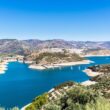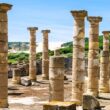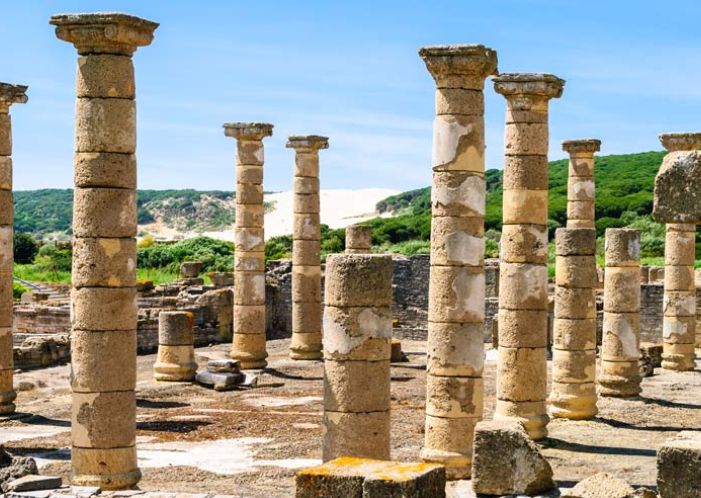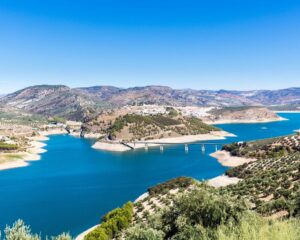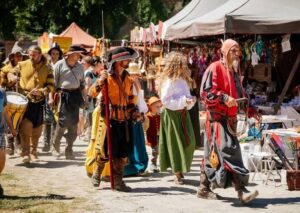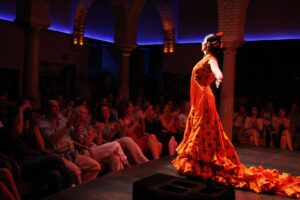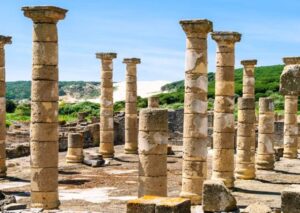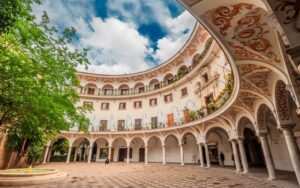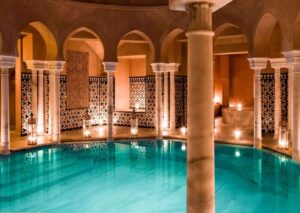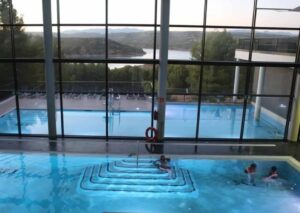- #1. Itálica (Santiponce)
- #2. Acinipo (Ronda)
- #3. Roman Theater (Málaga)
- #4. Baelo Claudia (Tarifa)
- #5. Roman Necropolis (Riotinto)
- #6. Baths of the Vaults (Marbella)
- #7. Roman Villa Bruñel (Jaén)
- #8. Via Augusta (Cádiz)
- #9. Roman Aqueduct (Huelva)
- #10. Roman Baths of La Hedionda (Casares)
- #11. The Columns of Hercules and Caesar (Seville)
- #12. Roman Theatre of Acci (Guadix)
- #13. Roman City of Arucci Turobriga (Aroche)
- #14. Archaeological Park of Torreparedones (Baena)
- #15. Roman Villa of Fuente Álamo (Puente Genil)
- Map of available tours to see Roman sites in Andalusia
- Map with all the Roman sites of Andalusia
Ready for a trip to the past without leaving Andalusia? Get ready to discover the incredible legacy left by the Romans in Andalusia. Beyond its beaches and parties, Andalusia hides archaeological treasures from many centuries ago that are quite well preserved considering the amount of time that has passed.
We are going to show you the Roman sites that we believe you must visit, whether you are on vacation in Andalusia or if you live in Andalusia and haven’t visited them yet.
So join us on this journey, we are going on a tour of the best Roman sites in Andalusia:
#1. Itálica (Santiponce)
📍province of Seville
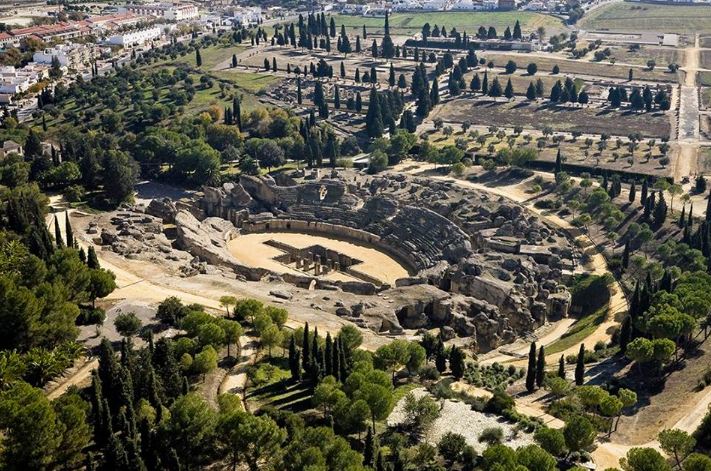
Itálica, founded in 206 BC by Publius Cornelius Scipio “Africanus” in present-day Santiponce, emerged in the context of the Second Punic War, after his victory over the Carthaginians in Ilipa. This settlement, located on the Cerro de San Antonio, was home to two famous emperors: Trajan and Hadrian. Under Hadrian’s rule, Itálica achieved the status of a colony, equating it to Rome itself.
Today, the Archaeological Complex of Itálica allows you to explore its spectacular amphitheater and walk through the original design of its streets, as well as discover homes, public buildings, artworks, and utensils that reflect the daily life of its inhabitants.
During the tour, you can stroll through its colonnaded streets and admire impressive residences such as the “House of the Birds” and the “House of the Planetarium”, known for their
#2. Acinipo (Ronda)
📍province of Málaga
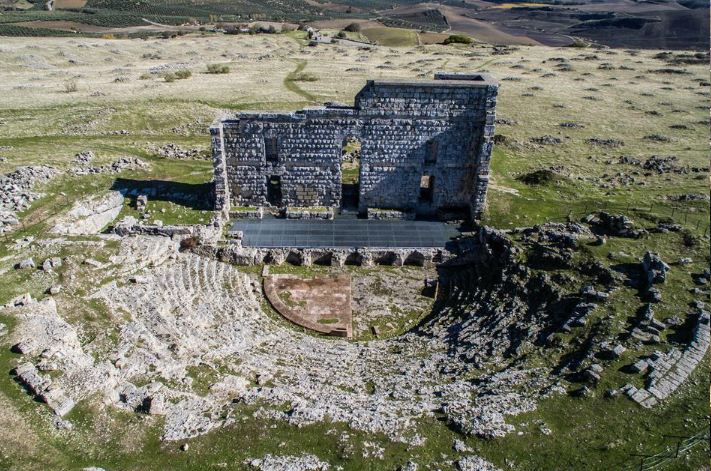
Acinipo, one of the most important Roman cities in Andalusia, stands out for its historical value and natural surroundings between Ronda and Grazalema, with views of Cádiz, Málaga, and Seville. Located on a limestone plateau at 999 meters above sea level, the site has a aquifer and mines nearby, which favored its occupation since Prehistory. The Roman presence from 206 BC transformed the place with monumental buildings and its own currency.
The Roman theater of Acinipo, built in the 1st century BC, is one of the oldest in Hispania, with a seating area carved into the limestone rock and a stage that housed sculptures and altars. Also noteworthy is a manorial villa (domus) near the forum and the thermal baths, built over a spring and with a palestra for exercises, influenced by Greek culture.
Abandoned in the 3rd century and in the 16th century it began to be called “Old Ronda”. In 2011, the Junta de Andalucía declared it a Site of Cultural Interest as the Archaeological Zone of the Roman City of Acinipo.
#3. Roman Theater (Málaga)
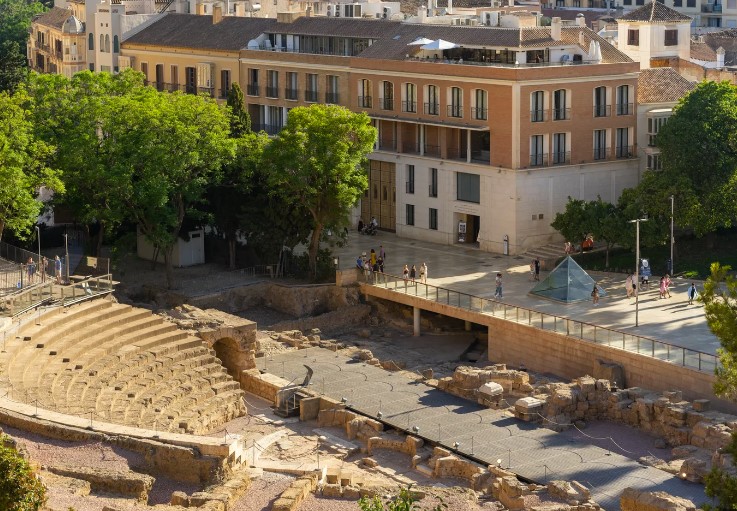
📍province of Málaga
The Roman Theatre of Málaga is the main vestige of the Roman presence in the city, built at the beginning of the 1st century AD during the Empire’s expansion. Before the theatre, the space housed some republican baths, over which the theatre was built, featuring a cavea, marble orchestra, and a scaena with a recreated wooden floor.
The theatre combines Greek and Roman architectural elements as it is set on the hillside and on artificial foundations. It was used for two centuries and, upon being abandoned at the end of the 3rd century AD, it was repurposed for fish-salting industry facilities and the production of the famous garum, whose vats can still be seen under the glass pyramid on Acazabilla Street.
From the 5th century AD, the theatre was used as a necropolis, and some of these burials can be seen today. Hidden under the city for centuries, the theatre was rediscovered in 1951 during works on the Casa de la Cultura, leading to excavations, site consolidation, and finally its opening to the public. Today, the Roman Theatre in the heart of Málaga city center is an archaeological site with an interpretation center open from Tuesday to Sunday.
#4. Baelo Claudia (Tarifa)
📍province of Cádiz
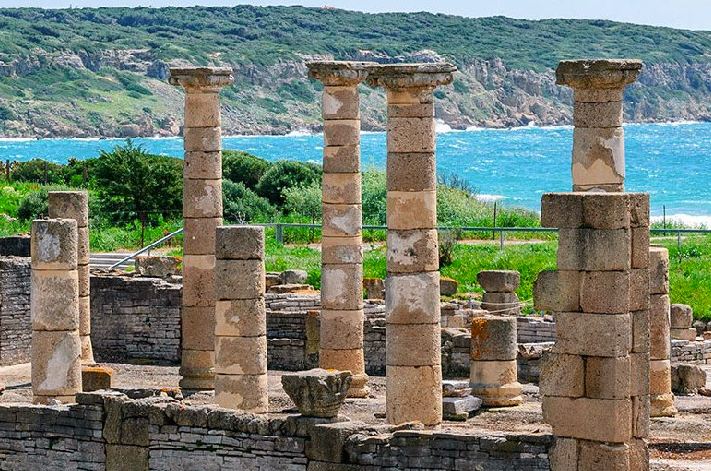
Located in Tarifa, Baelo Claudia is an ancient Roman factory-town famous for its state of preservation and its production of salted fish and garum, a sauce exported throughout the Empire. Although a 3rd century AD earthquake severely affected the city, a small group of inhabitants remained until the 7th century AD, when it was abandoned.
The excavations started in 1917 revealed a prosperous city with classic Roman urbanism and a rational design. Cádiz thus preserves in Baelo Claudia one of the best examples of Roman urban planning. Most of the buildings, constructed during the time of Emperor Claudius, are located in a monumental center next to the forum, following an axis perpendicular to the sea.
#5. Roman Necropolis (Riotinto)
📍province of Huelva
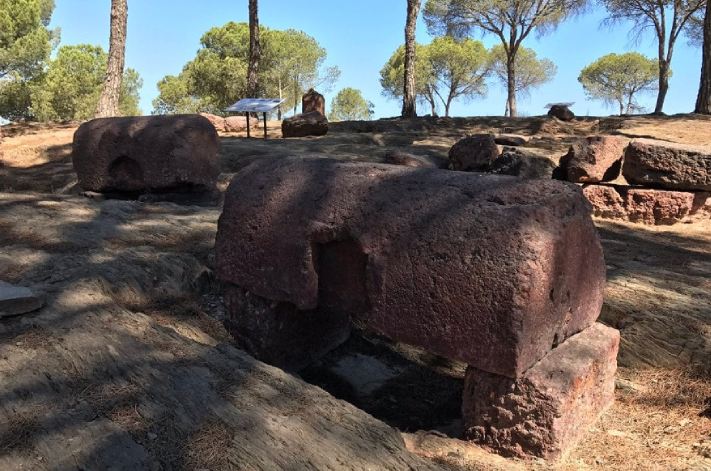
The Roman Necropolis of La Dehesa is located on two hills near the village of La Dehesa, one within a current mining company. About 1,800 years ago, in the 1st and 2nd centuries, the inhabitants of Urium used this place to bury their loved ones, coinciding with the rise of Roman mining.
The funerary practice consisted of incineration, placing the ashes in a ceramic urn along with a small set of grave goods, such as an oil lamp, coins, and glass objects. Offerings of food and flowers were common, reaching the deceased through a hole in the tomb.
Currently, the necropolis has been rehabilitated and is in the process of reopening.
#6. Baths of the Vaults (Marbella)
📍province of Málaga
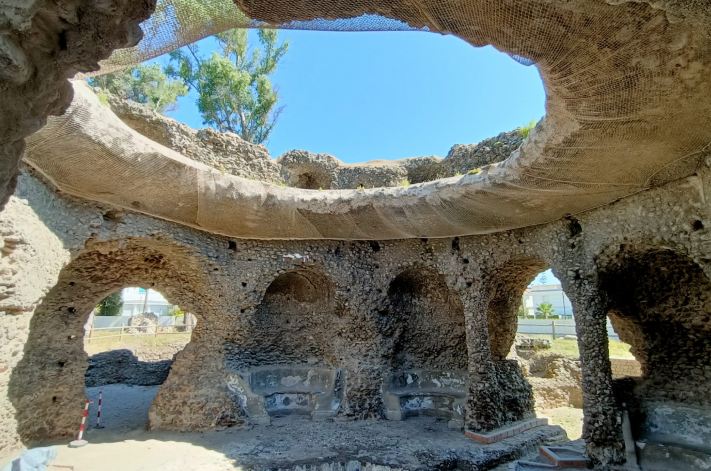
The thermal building of the vaults in Marbella is one of the best-preserved Roman baths in Spain, built between the 2nd and 3rd centuries AD for a prosperous Roman population. Located near the Guadalmina River, at the possible site of ancient Cilniana, this complex retains vaulted rooms, a central octagonal room, and remnants of its heating system.
Built with advanced techniques, such as opus signinum and latericium, it maintains fragments of mosaics and limestone from the Torcal de Antequera. Its design includes a central pool and a route alternating hot and cold baths, reflecting the characteristic luxury of the Late Roman Empire.
#7. Roman Villa Bruñel (Jaén)
📍province of Jaén
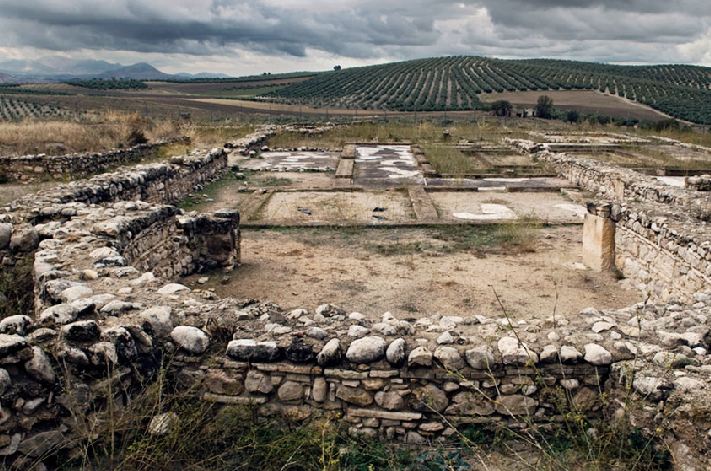
The name Bruñel comes from the Latin word “Balneum” (bath), evolved in Mozarabic. This site includes an Iberian necropolis from the 4th century BC and a Roman villa occupied in three phases between the 2nd and 4th centuries AD. The villa was on the Roman road connecting Cástulo with Guadix, within the province of Carthaginense.
The first phase (2nd century AD) is notable for a cruciform building with a cistern and arches, decorated with colorful stuccos. In the second phase (3rd century AD), the villa is embellished with an atrium with impluvium and geometric mosaics, including that of Thetis, now in the Museum of Jaén. The last phase (4th century AD) shows a simpler structure, with spaces dedicated to agricultural activities.
The villa was finally abandoned after a great fire, the date of which is debated between the 5th and 8th centuries AD.
#8. Via Augusta (Cádiz)
📍province of Cádiz
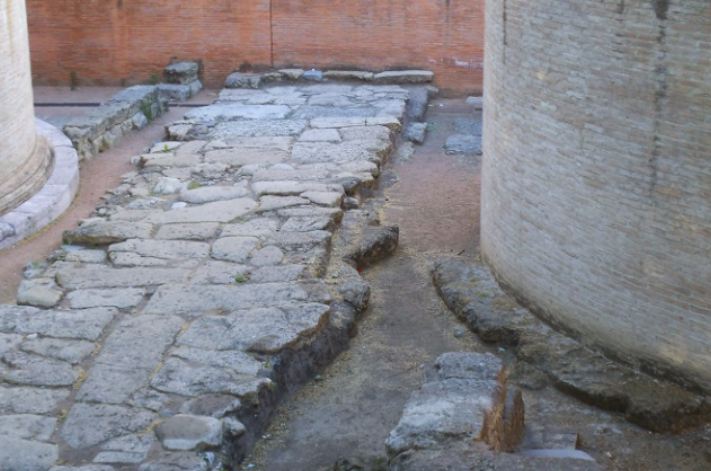
The Via Augusta, the longest Roman road in Hispania (about 1,500 km), connects Cádiz with Seville and was part of an important Roman axis that went from the Pyrenees to Rome. Built in honor of Julius Caesar and Augustus, the road is now a Jacobean route that allows pilgrims from southern Spain to begin their journey to Santiago.
Starting from Cádiz, the route passes through towns such as San Fernando, Jerez, El Cuervo, Utrera and finally reaches Seville.
#9. Roman Aqueduct (Huelva)
📍province of Huelva
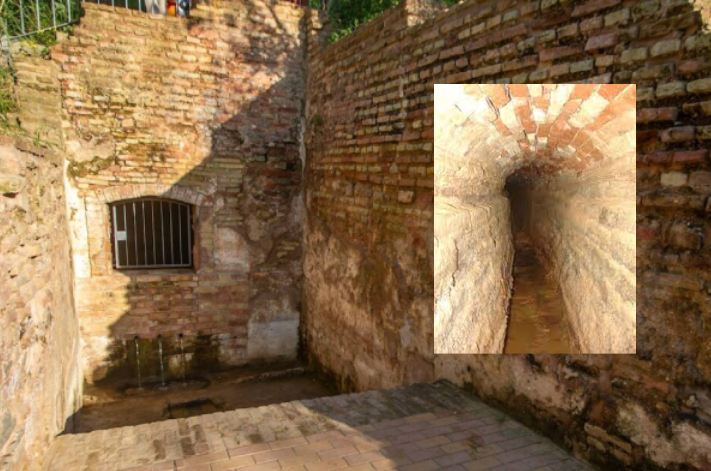
The Roman aqueduct of Huelva, although little documented, is mentioned in ancient sources, such as the Arab geographer al-Himyarî in the 15th century. Possibly built in the 2nd century AD during the peak of Roman Onuba, it transported water from the Conquero hills to the city, for irrigation of gardens and supply to its inhabitants. Despite its deterioration, which may have been due to factors such as the 1755 earthquake or the high cost of its maintenance, the aqueduct continued to function until the 19th century.
The construction of new infrastructures and the Conquero Promenade in the 20th century affected its layout, although even today water flows in the Old Fountain, used for urban gardens. The aqueduct’s catchment system may have combined rainwater, springs, and aquifers, but its exact route remains a mystery.
🟢 Related content: What to see in Huelva?
#10. Roman Baths of La Hedionda (Casares)
📍province of Málaga
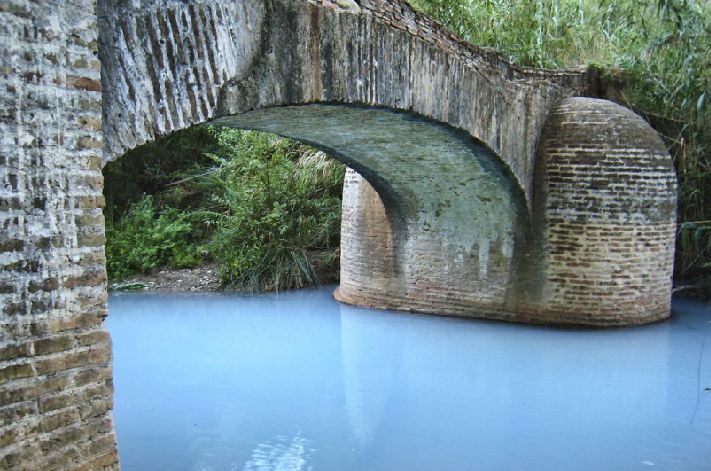
The Baths of La Hedionda, of Roman origin and remodeled by the Arabs, are sulfurous ferruginous baths located on the right bank of the Albarrán stream. Its square structure includes a spherical dome and two barrel vaults. Legend attributes its construction to Julius Caesar, who is said to have found relief from a skin disease in its waters.
Currently, the baths are open to the public, although they suffer from deterioration due to vandalism. They have been declared a Site of Cultural Interest and their construction uses lime concrete, stones, and solid bricks.
#11. The Columns of Hercules and Caesar (Seville)
📍province of Seville
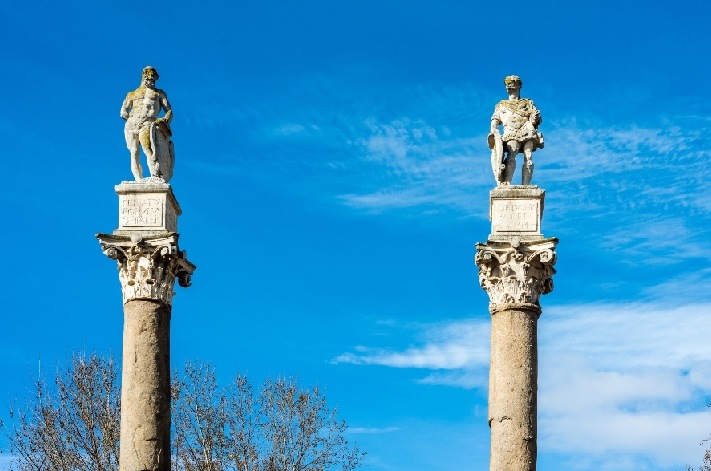
The Alameda de Hércules in Seville, created in 1574 to drain a wet area, is one of the oldest public gardens in Spain. With three hectares and its iconic Roman columns brought from Mármoles Street, it was designed as a leisure and walking space.
The sculptures of Hercules and Julius Caesar stand out, symbolizing the greatness of Seville, along with its poplars, chosen for their fast growth and mythological value. Over the years, the Alameda has maintained its significance as a meeting place in the heart of the city.
#12. Roman Theatre of Acci (Guadix)
📍province of Granada
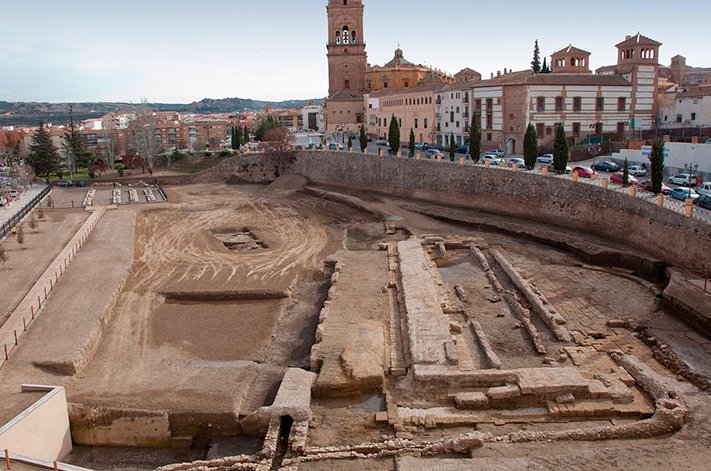
The Roman Theatre of Colonia Iulia Gemella Acci in Guadix is an impressive archaeological treasure comparable to the theatres of Mérida and Cartagena. Founded by Julius Caesar after the battle of Munda in 45 BC, this colony housed veterans of the Prima and Secunda legions.
Built between 29-27 BC, the theatre covered about 6000 m² and featured scanea (stage), orchestra (semicircular area), and cavea (seating area). This monumental space offered leisure activities to the growing Roman population and symbolized their lifestyle in this colony.
#13. Roman City of Arucci Turobriga (Aroche)
📍province of Huelva
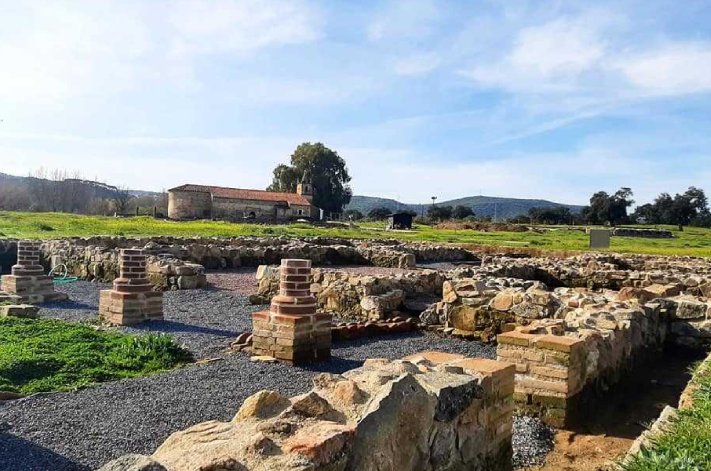
The Roman city of Arucci Turobriga, founded between 15-10 BC during the reign of Augustus, represented the culmination of Roman control in the Beturia Celtica through agricultural colonization. This city combined populations from two pre-Roman settlements (Arucci and Turobriga) with Latin settlers, as revealed by its epigraphic inscriptions.
Arucci Turobriga flourished during the reigns of Flavius and Hadrian, but began to decline in the 3rd century, when it was used as a quarry for buildings in Aroche. Today, it is possible to visit excavated structures such as the forum, market, baths, several houses, necropolis, and the wall. The city celebrates the Festival of Diana, a historical reenactment that revives its Roman past.
#14. Archaeological Park of Torreparedones (Baena)
📍province of Jaén
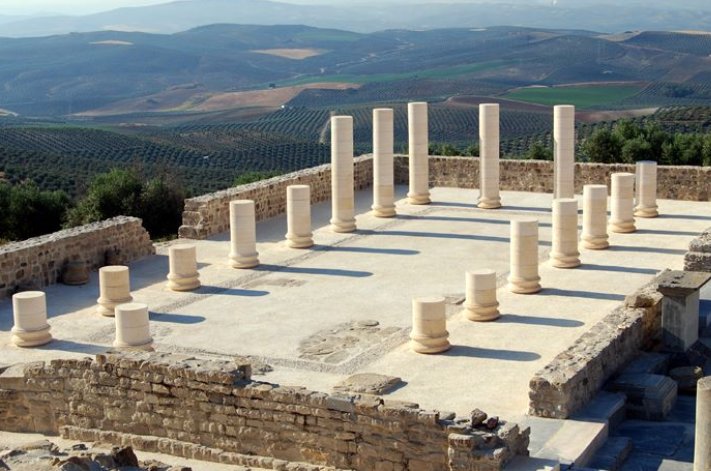
The Torreparedones site, declared a Cultural Interest Site in Andalusia, is located on a strategic elevation that dominates the plains of Jaén and Córdoba. With remains of continuous occupation from the Copper Age to the Middle Ages, it reached its peak during the Iberian and Roman periods. Its findings include an Iberian sanctuary, with votive offerings dedicated to the goddess Caelestis, and a Roman city with monuments such as the forum, baths, a market (macellum), a temple, and the house of the baker.
Currently, the City Council of Baena is promoting its conservation and enhancement, especially the Roman baths.
#15. Roman Villa of Fuente Álamo (Puente Genil)
📍province of Córdoba
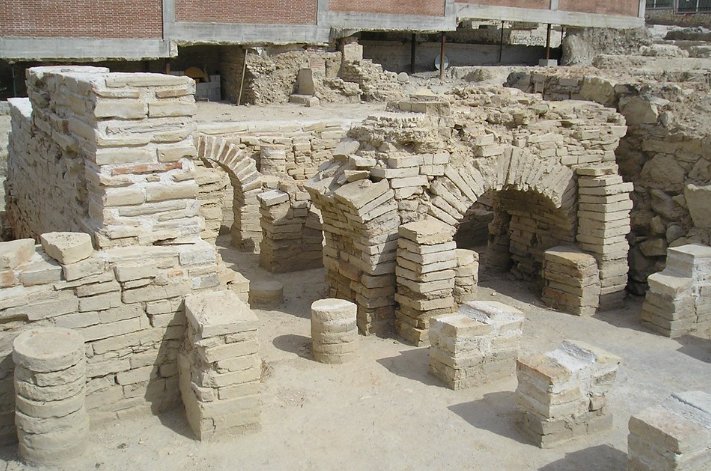
Fuente Álamo is a unique site that invites you to travel back in time and explore how our ancestors lived. It stands out for having the only mosaic in the world where the characters converse with each other, and it is an ancient country residence that reflects the wealth and power of its time. Additionally, it is an archaeological site that houses a cemetery shared by three religions.
And that’s the end of our tour of Roman sites in Andalusia. What did you think? Would you add any to the list? Tell us which one in the comments!
Map of available tours to see Roman sites in Andalusia
Map with all the Roman sites of Andalusia
↓ ↓ ↓ ↓ ↓

